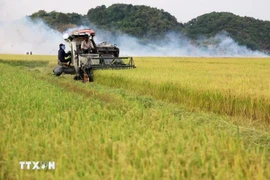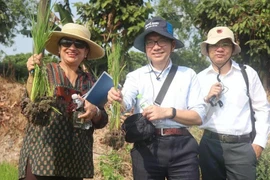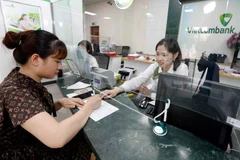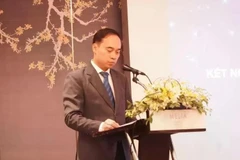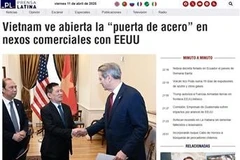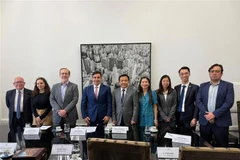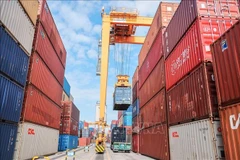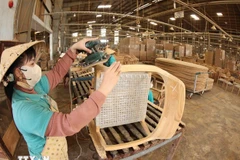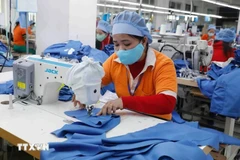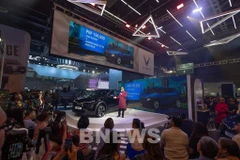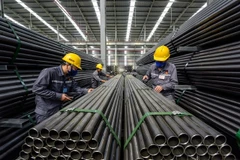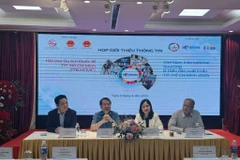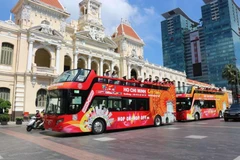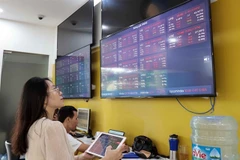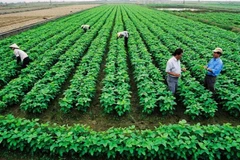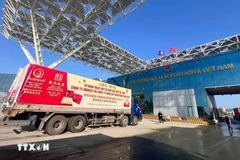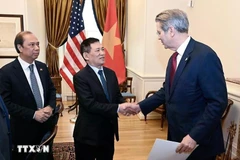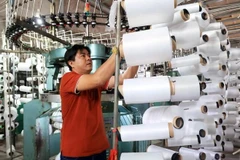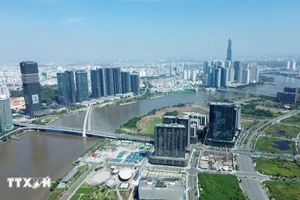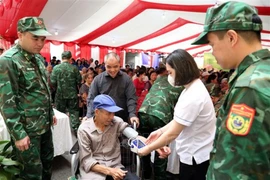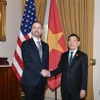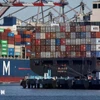Can Tho (VNA) – Experts recently gathered at a symposium in the Mekong Delta city of Can Tho to discuss measures and new strategies for the rice sector amidst rapid market changes and technological advancements.
Statistics show that Vietnam faces minimal competition in the premium rice segment. Its rice has secured a presence in numerous countries with stringent quality requirements, thanks to superior quality. The distribution of Vietnamese rice exports spans Asia (72%), Africa (18%), and the Americas (4%), with exporters increasingly recognising Africa as an emerging market opportunity.
Chairman of the Vietnam Food Association (VFA) Do Ha Nam said despite price decreases in early 2025, the export volume for the first quarter reached over 2.2 million tonnes, representing a 2% rise compared to Q1 2024. This demonstrates continued global demand for Vietnamese rice.
The VFA leader held that it is necessary to improve the rice variety structure and market positioning. Vietnam aims to improve the quality and value of export rice by reducing the proportion of low and medium-grade white rice while increasing the share of aromatic, Japonica, and specialty rice varieties. Specifically, by the end of 2025, low and medium-grade white rice should account for no more than 15% of exports, and aromatic, Japonica, and specialty rice should reach approximately 40%. By 2030, these targets become more ambitious, with low- and medium-grade white rice further reduced to below 10% and premium varieties increasing to around 45%.
Nam also advocated building efficient value chains to increase added value for both farmers and businesses, as well as boosting coordination among regulatory agencies, enterprises, and farmers to ensure benefits for all stakeholders.
Meanwhile, Director of the Cuu Long (Mekong) Delta Rice Research Institute Tran Ngoc Thach acknowledged that while Vietnamese rice dominates the long-grain white rice segment, it still faces limitations in the premium aromatic rice category and in nutritional and processed rice ones. He believed that participation from individuals, businesses, and public research institutions will help diversify rice varieties in terms of quality and provide businesses with opportunities to tap into high-value niche markets domestically and internationally.
He suggested stakeholders should establish suitable growing areas for each variety to ensure stable yield and grain quality, adding this requires efforts and cooperation from multiple parties to guarantee sustainability and development of the country's agricultural sector.
According to Nam, the one million hectares of high-quality and low-emission rice farming project in the Mekong Delta, which has reaped initial encouraging results, is also expected to create breakthroughs for Vietnamese rice.
Echoing the view, Nguyen Anh Phong, Deputy Director of the Institute of Strategy and Policy on Agriculture and Environment under the Ministry of Agriculture and Environment, suggested that the project should focus on premium, high-quality, and certified varieties, accompanied by branding efforts, to maintain Vietnamese rice quality and access high-end markets.
Emphasising that businesses play a crucial role in market and value orientation in the country's rice supply chain, Phong noted that Vietnam has rapidly captured rice markets, with its businesses quickly identifying profitable market segments.
The symposium also featured networking sessions between banks, businesses, and cooperatives regarding credit demand, as well as information about financial products and credit support for rice production, processing, and sale./.
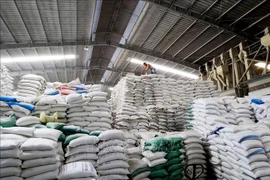
Vietnam’s rice export prices show signs of recovery
According to the VFA's data, out of 1.1 million tonnes of rice exported in the first two months of the year, high-quality rice accounted for 80%, reinforcing Vietnam’s competitive edge against India and Thailand.

